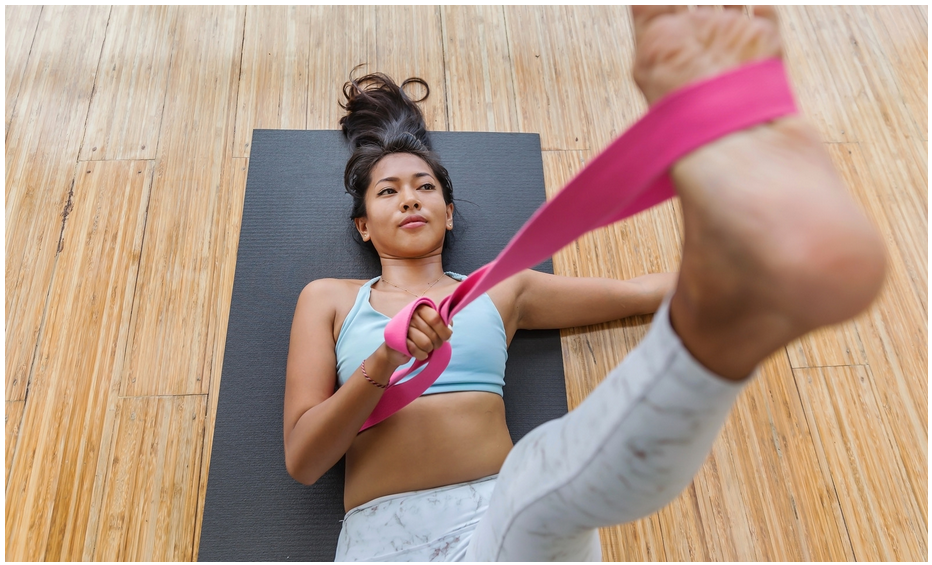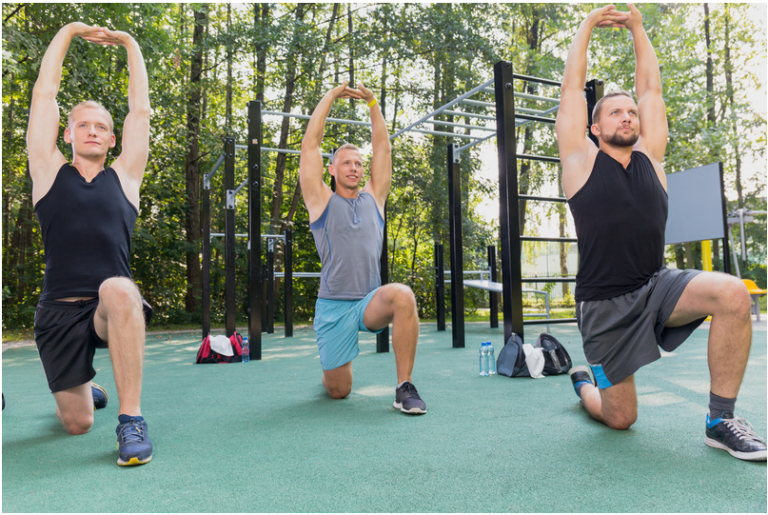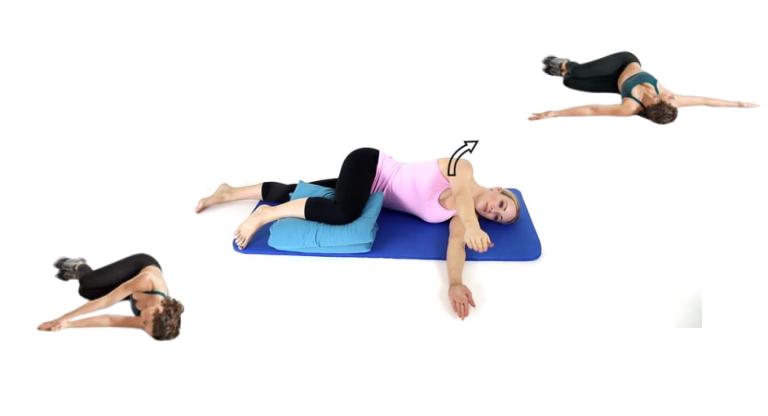
PNF Stretching Exercises for Hamstrings | Benefits with PNF Technique

Do you have tight hamstrings that limit your range of motion and cause discomfort? Do you want to improve your flexibility and prevent injuries? Try PNF stretching for your hamstrings if you answered yes.
PNF stands for proprioceptive neuromuscular facilitation, a type of stretching that involves contracting and relaxing the muscles to deepen the stretch. PNF stretching can help you increase your flexibility, improve your performance, and reduce muscle soreness.
In this article, you will learn what PNF stretching is, how it works, and how to do it for your hamstrings. You will also discover the benefits and precautions of PNF stretching and some tips to make it more effective.
What is PNF Stretching?
PNF stretching is a type of stretching that involves alternating between passive and active stretching. Passive stretching is when you use an external force, such as your hand, a strap, or a partner, to stretch a muscle. Active stretching is when you contract the muscle being stretched, or its opposite muscle, to increase the stretch (1).
PNF stretching uses three phases: a passive stretch, a contraction, and a relaxation. The passive stretch is when you stretch the muscle to its maximum comfortable length. The contraction is when you resist the stretch by pushing or pulling against the external force. Relaxation is when you relax the muscle and allow it to be stretched further.
PNF stretching can be done in different ways, such as hold-relax, contract-relax, and hold-relax-contract. The most common method for hamstrings is the contract-relax technique, which we will explain in detail later.
How Does PNF Stretching Work?

PNF stretching works by taking advantage of two mechanisms: autogenic inhibition and reciprocal inhibition. Autogenic inhibition is when the muscle being stretched sends a signal to the brain to relax, allowing it to be stretched further. Reciprocal inhibition is when the opposite muscle contracts, causing the muscle that is being stretched to relax.
PNF stretching also stimulates the Golgi tendon organ (GTO), a sensory receptor that monitors the tension in the muscle and tendon. When the GTO senses a high level of tension, it sends a signal to the brain to relax the muscle, preventing it from tearing. This allows the muscle to be stretched beyond its normal range.
How to Do PNF Stretching for Hamstrings
To do PNF stretching for hamstrings, you will need a strap, a towel, or a partner to assist you. You can also use a wall or a chair for support. Here are the steps to follow:
- Lie on your back with your legs straight and flat on the floor.
- Loop the strap around your right foot and hold it with both hands.
- Lift your right leg toward the ceiling, keeping it straight, and your left leg on the floor.
- Pull the strap gently to bring your leg closer to your chest, feeling a stretch in the back of your thigh. This is the passive stretch phase. Hold it for 10 seconds.
- Push your foot against the strap as if trying to lower your leg to the floor. This is the contraction phase. Do not move your leg; contract your hamstring. Hold it for 6 seconds.
- Relax your leg and pull the strap again, bringing your leg into a deeper stretch. This is the relaxation phase. Hold it for 30 seconds.
- Repeat the cycle 2 or 3 times, then switch legs.
What are the Benefits of PNF Stretching for Hamstrings?
PNF stretching for hamstrings can provide several benefits, such as:
- Increasing your flexibility and range of motion
- Improving your posture and alignment
- Reducing muscle stiffness and soreness
- Enhancing your performance and recovery
- Preventing injuries and pain
What are the Precautions for PNF Stretching for Hamstrings?
PNF stretching for hamstrings is generally safe and effective, but there are some precautions to keep in mind, such as:
- Do not stretch if you have an acute injury, inflammation, or infection in the area.
- Do not stretch beyond your comfortable limit or to the point of pain.
- Do not hold your breath during the stretch; exhale as you relax.
- Do not bounce or jerk during the stretch; move slowly and smoothly.
- Do not stretch the same muscle group more than once a day.
- Consult your doctor or physical therapist if you have any medical conditions or concerns before starting PNF stretching.
How to Make PNF Stretching for Hamstrings More Effective?
PNF stretching for hamstrings can be more effective if you follow these tips:
- Warm up before stretching to increase blood flow and elasticity in the muscles
- Stretch after a workout or at the end of the day when your muscles are more relaxed.
- Use a partner or a device to assist you and provide feedback.
- Vary the angle and direction of the stretch to target different parts of the hamstrings.
- Combine PNF stretching with other types of stretching, such as static, dynamic, and yoga.
- Be consistent and patient, as flexibility takes time and practice to improve.
Summary
PNF stretching is a type of stretching that involves contracting and relaxing the muscles to deepen the stretch. PNF stretching can help you increase your flexibility, improve your performance, and reduce muscle soreness.
To do PNF stretching for hamstrings, you need a strap, a towel, or a partner to assist you. You can also use a wall or a chair for support. The steps are:
- Lie on your back with your legs straight and flat on the floor.
- Loop the strap around your right foot and hold it with both hands.
- Lift your right leg toward the ceiling, keeping it straight, and your left leg on the floor.
- Pull the strap gently to bring your leg closer to your chest, feeling a stretch in the back of your thigh. Hold it for 10 seconds.
- Push your foot against the strap as if trying to lower your leg to the floor. Hold it for 6 seconds.
- Relax your leg and pull the strap again, bringing your leg into a deeper stretch. Hold it for 30 seconds.
- Repeat the cycle 2 or 3 times, then switch legs.
PNF stretching for hamstrings can provide several benefits, such as increasing your flexibility and range of motion, improving your posture and alignment, reducing muscle stiffness and soreness, enhancing your performance and recovery, and preventing injuries and pain.
PNF stretching for hamstrings is generally safe and effective. Still, there are some precautions to keep in mind, such as not stretching if you have an acute injury, inflammation, or infection in the area. Also, not stretching beyond your comfortable limit or to the point of pain, not holding your breath during the stretch, not bouncing or jerking during the stretch, and not stretching the same muscle group more than once a day. Consult your doctor or physical therapist before starting PNF stretching if you have any medical conditions or concerns.
PNF stretching for hamstrings is more effective if you warm up before stretching, stretch after a workout, or at the end of the day. Use a partner or device to help you stretch, change the angle and direction of the stretch, combine PNF stretching with other types of stretching, and be consistent and patient.
This article has helped you learn how to stretch your hamstrings with the PNF technique. Try it out and see the difference for yourself!



